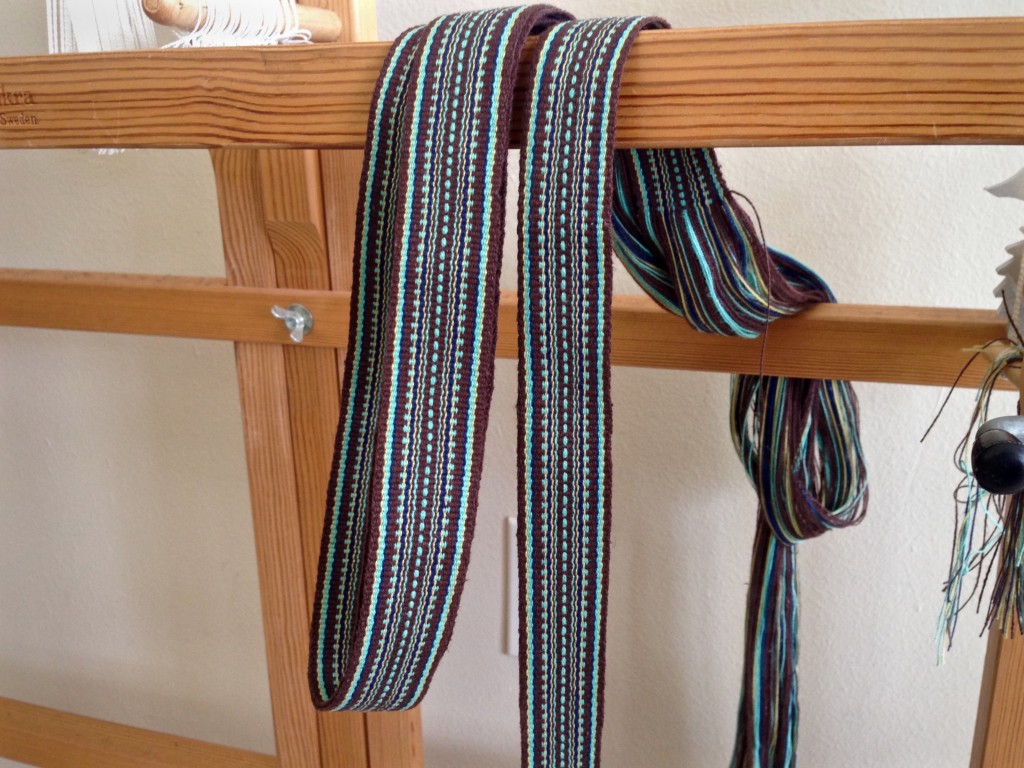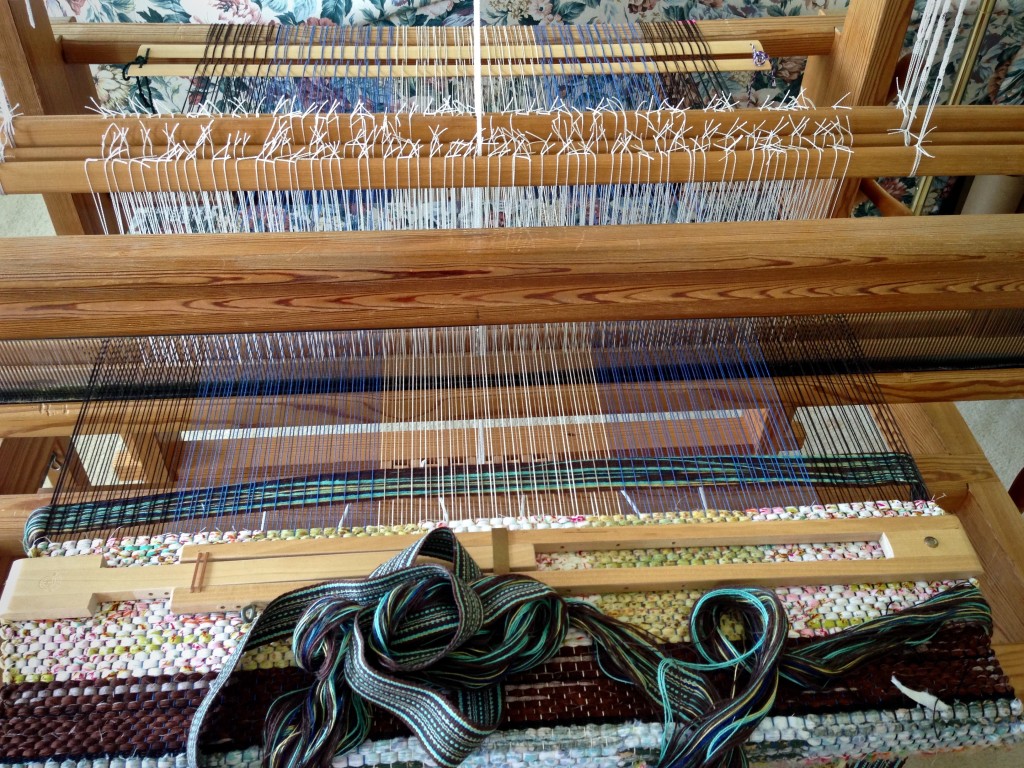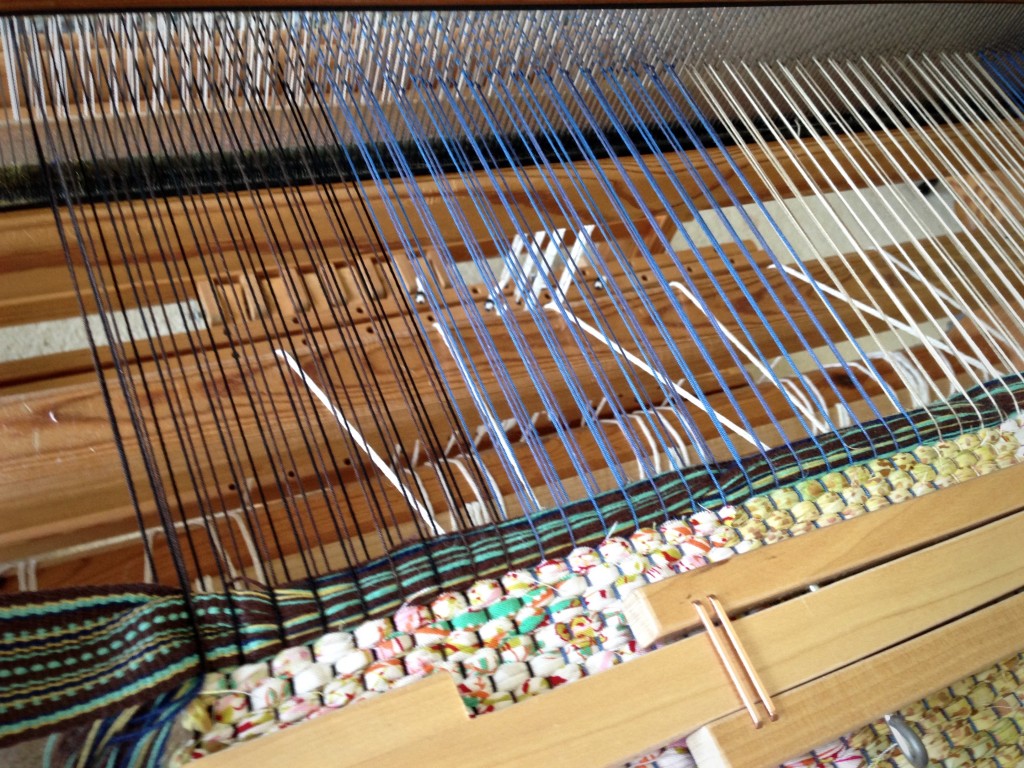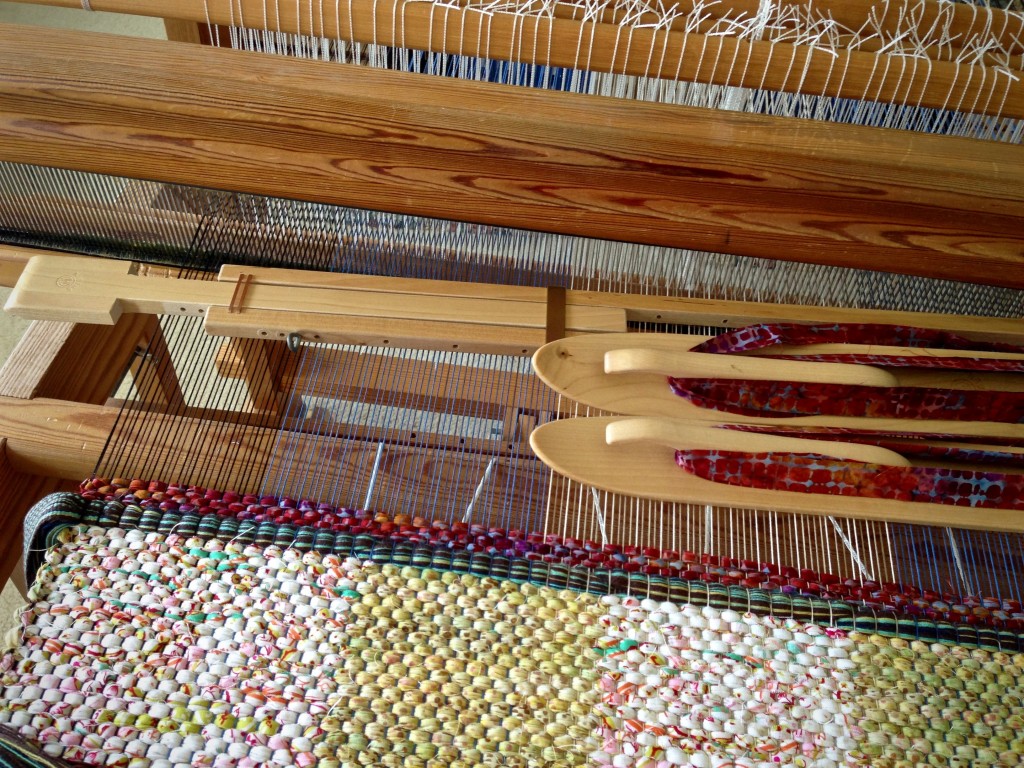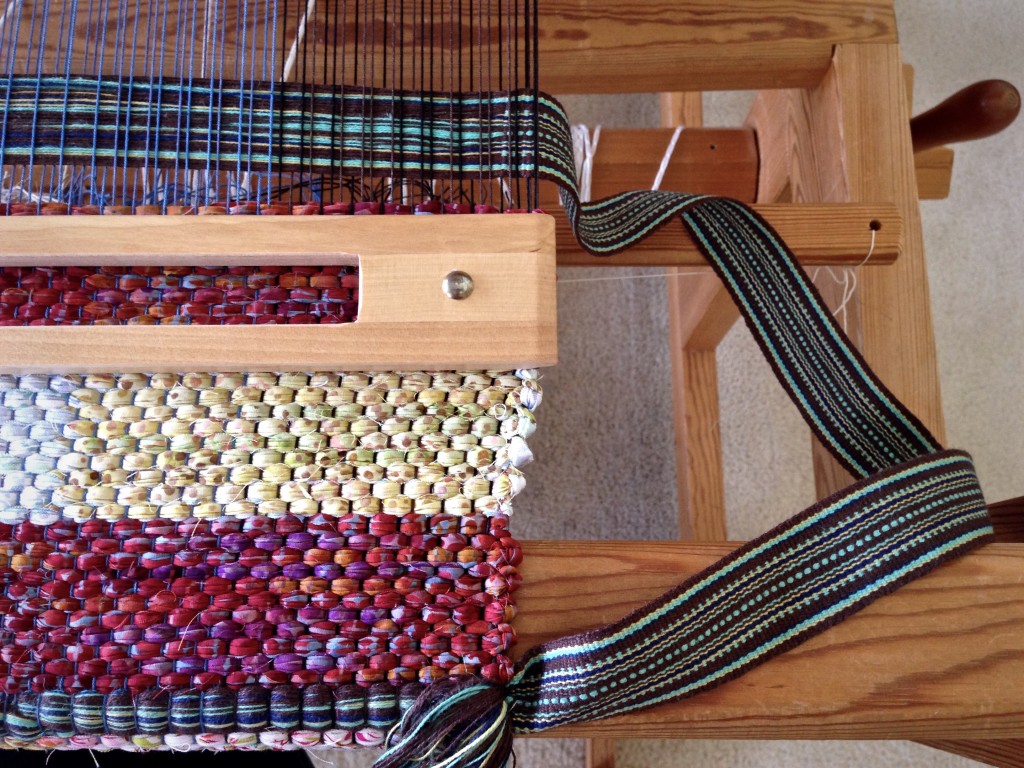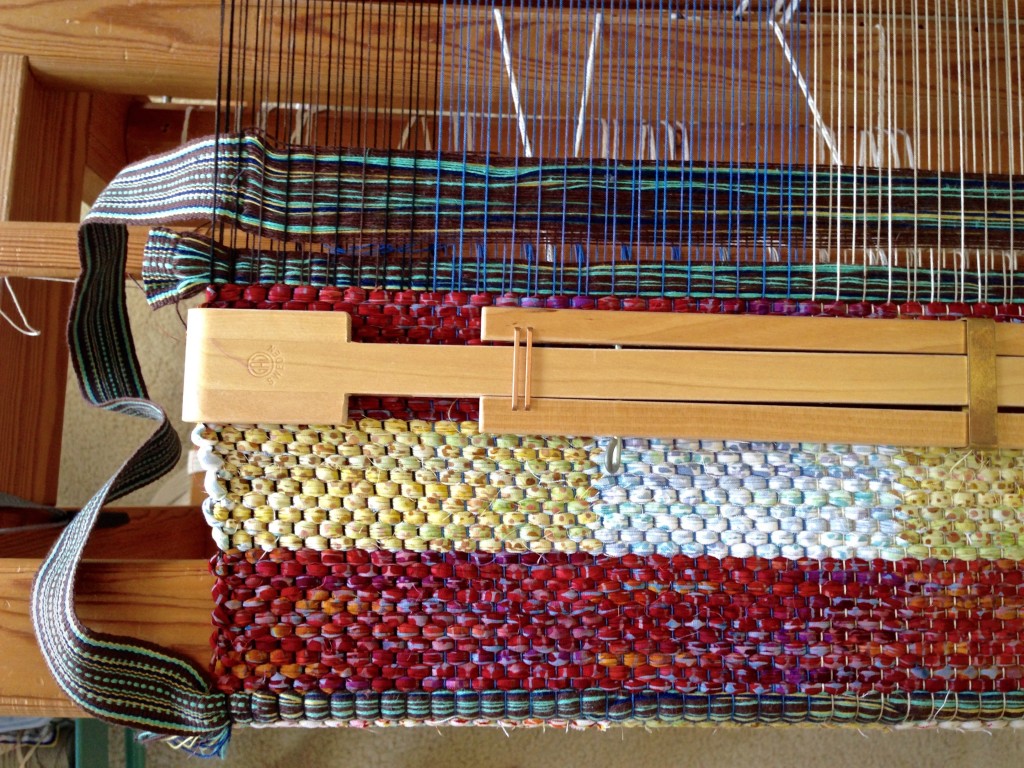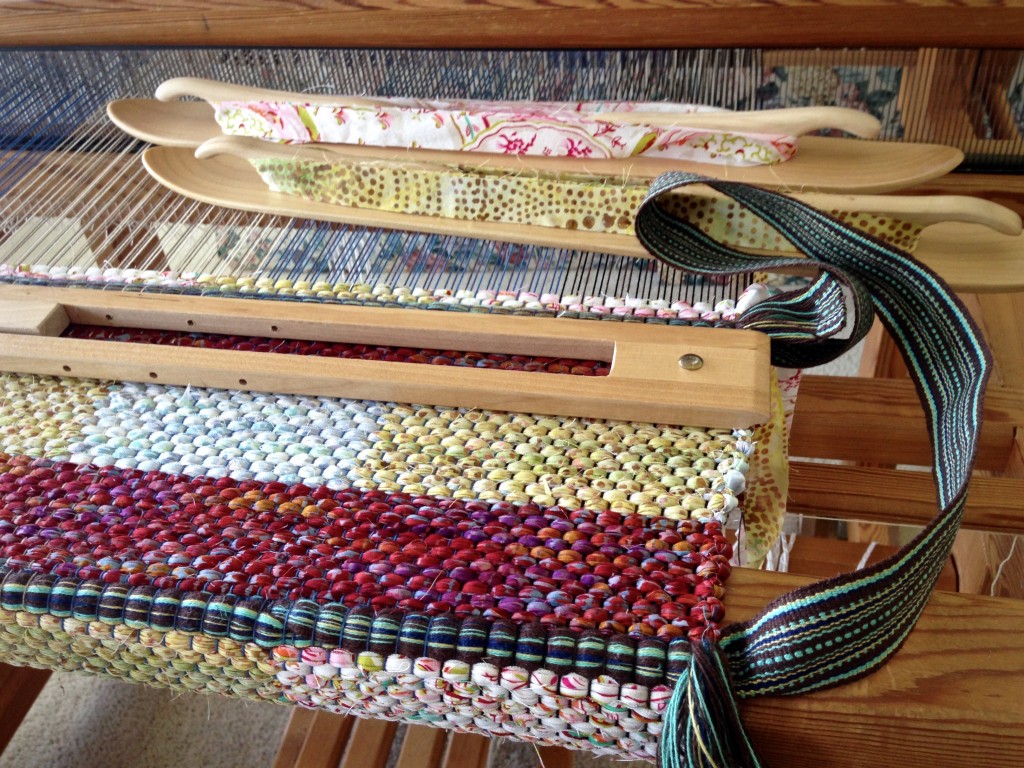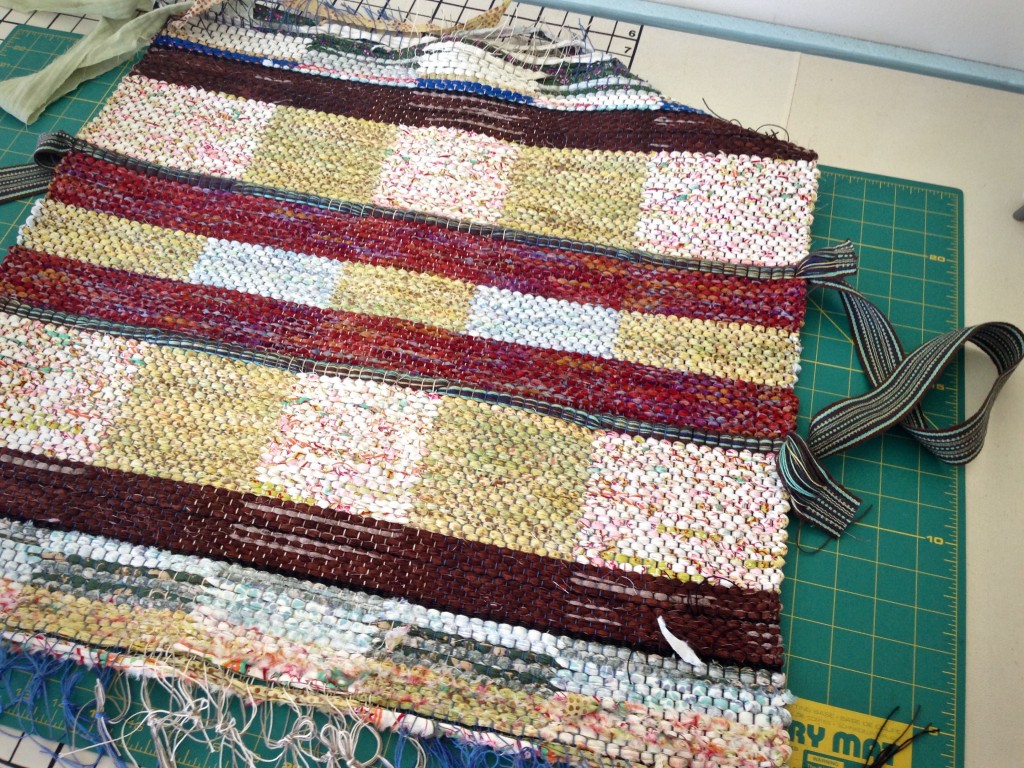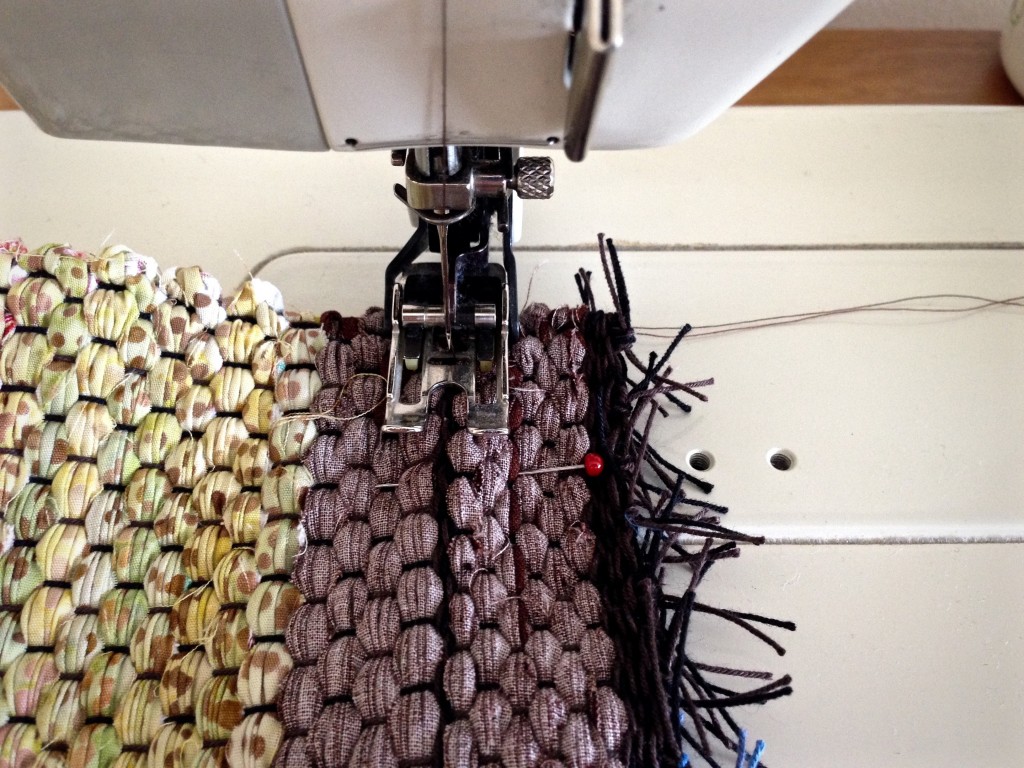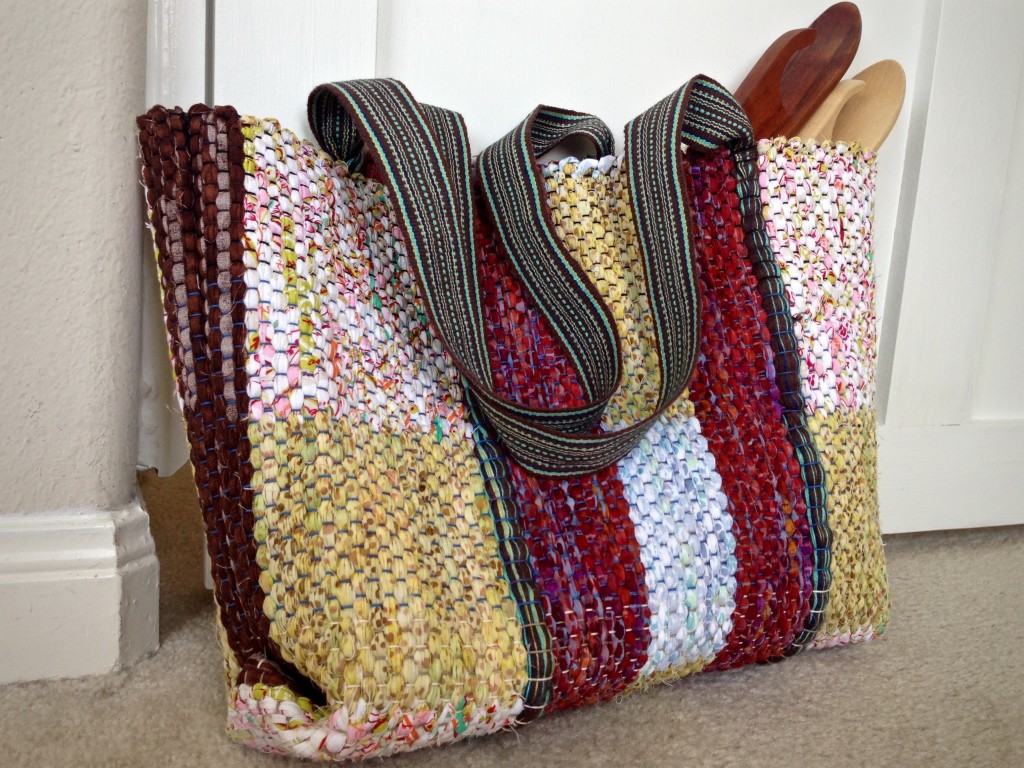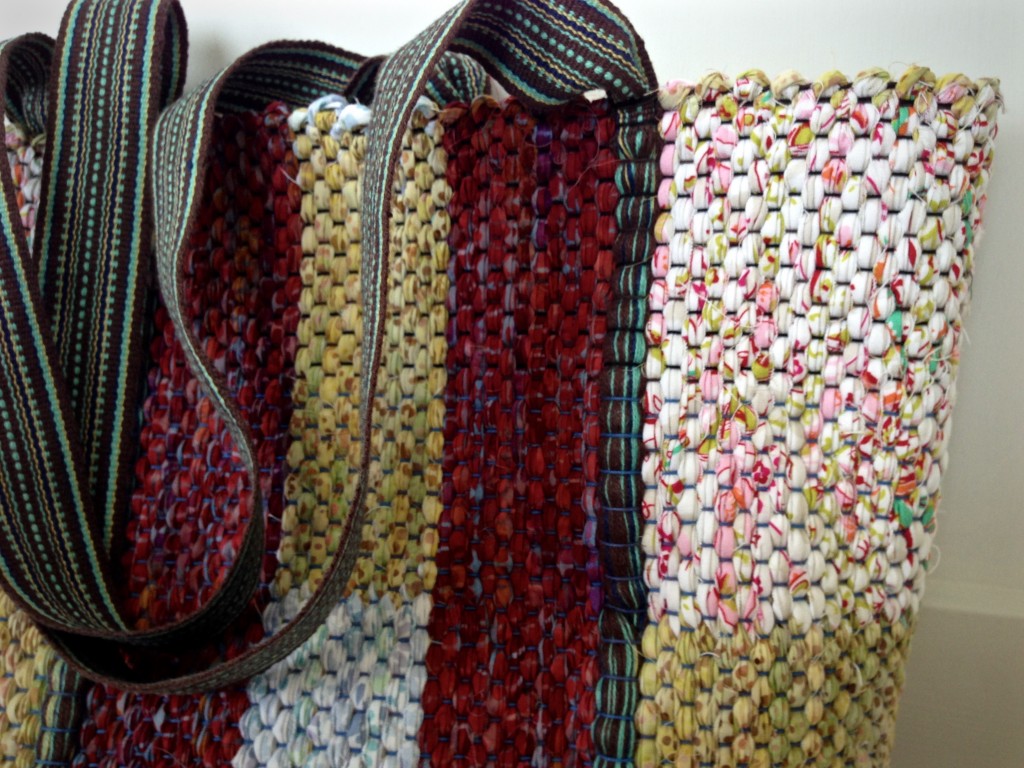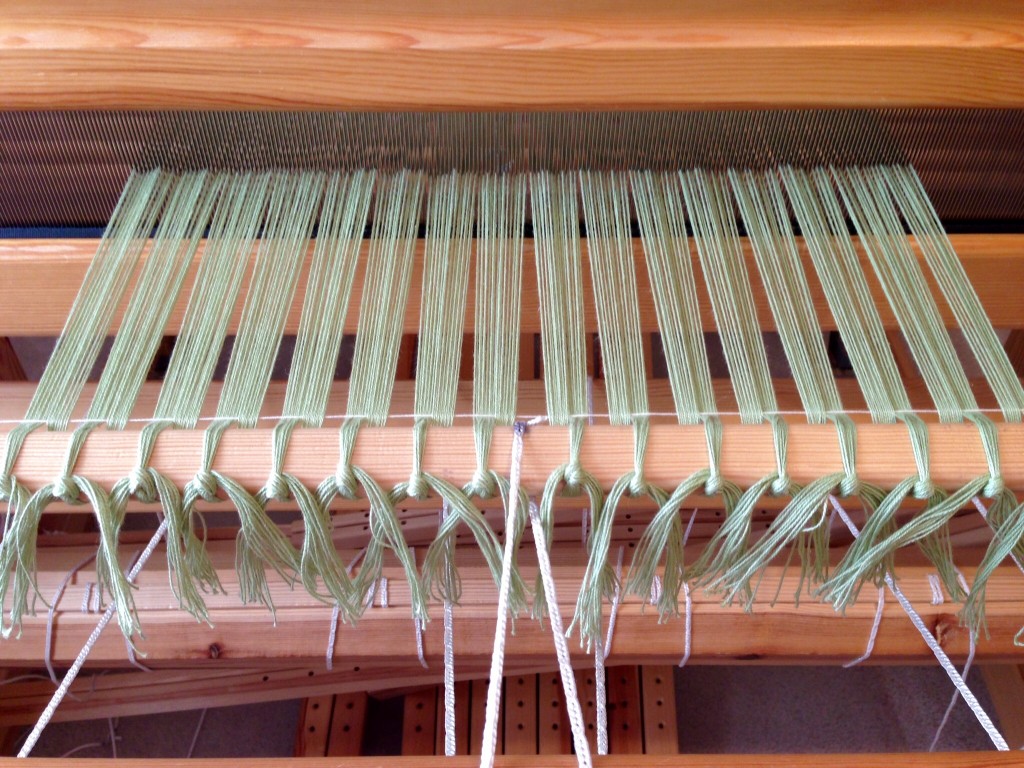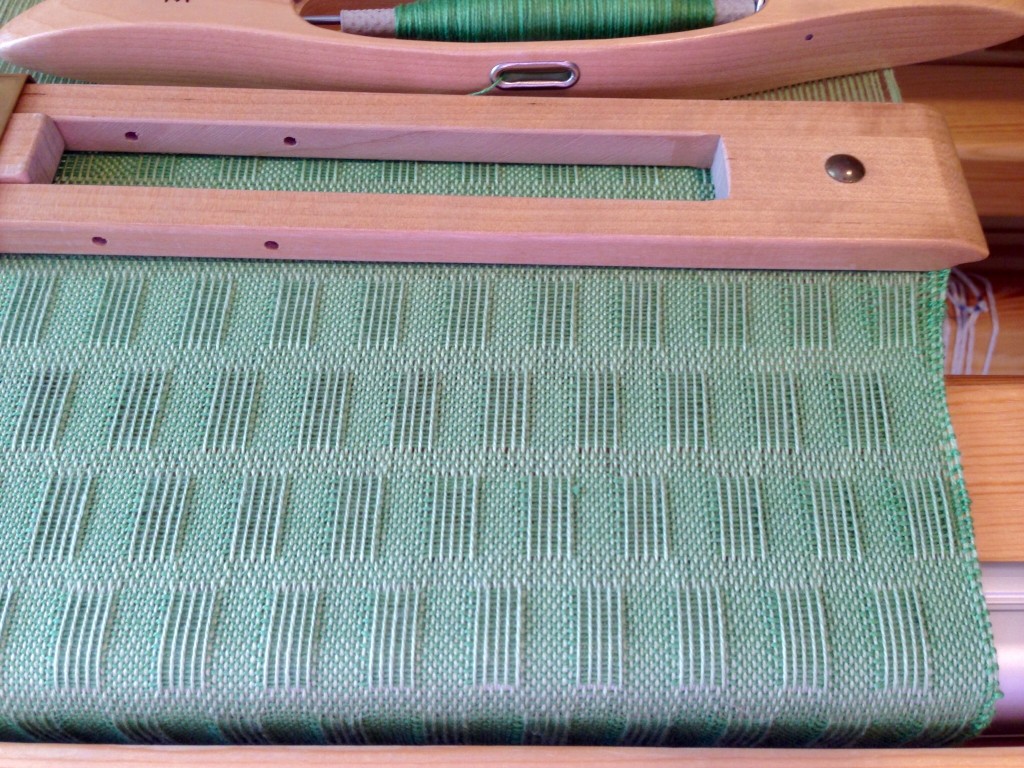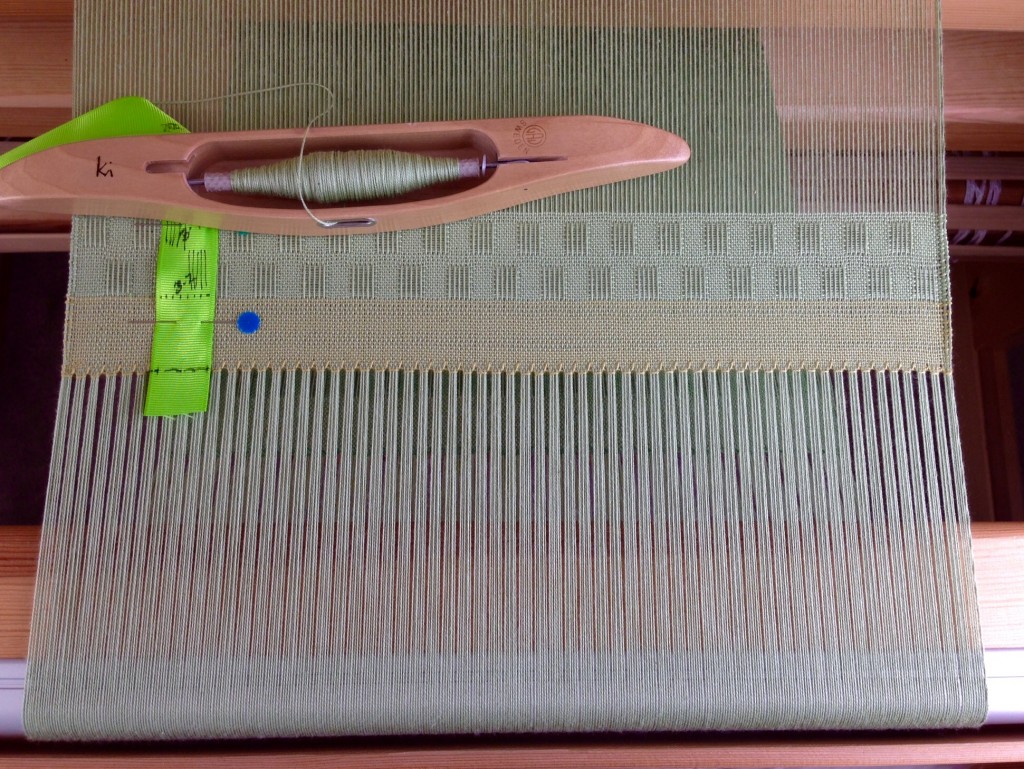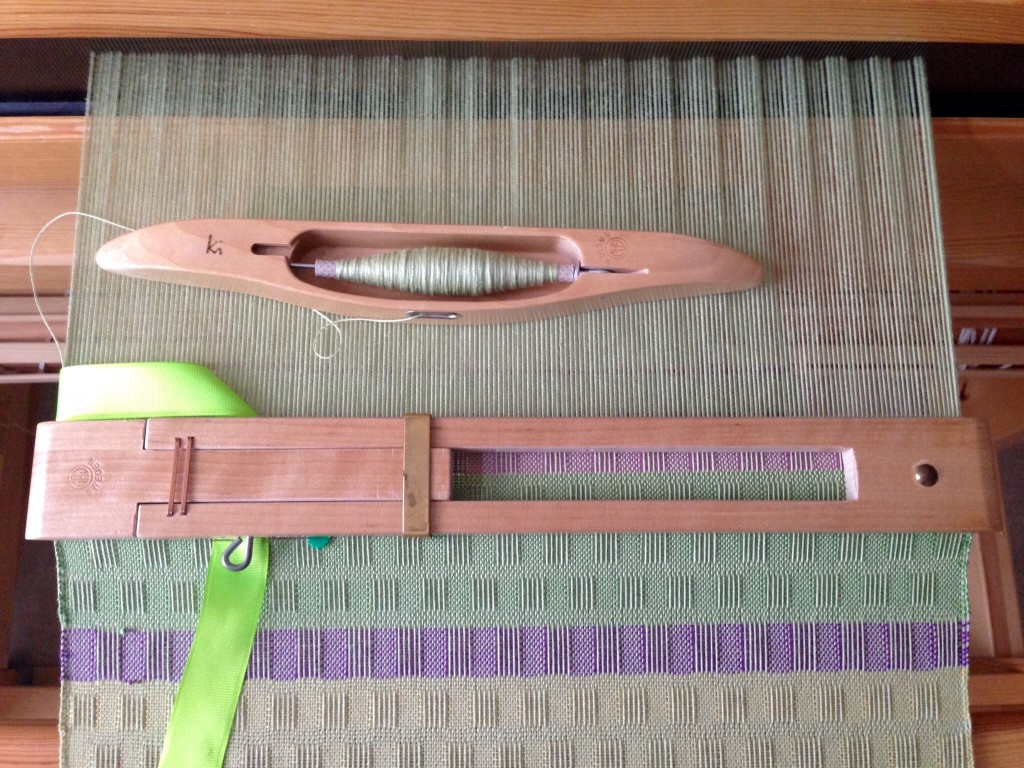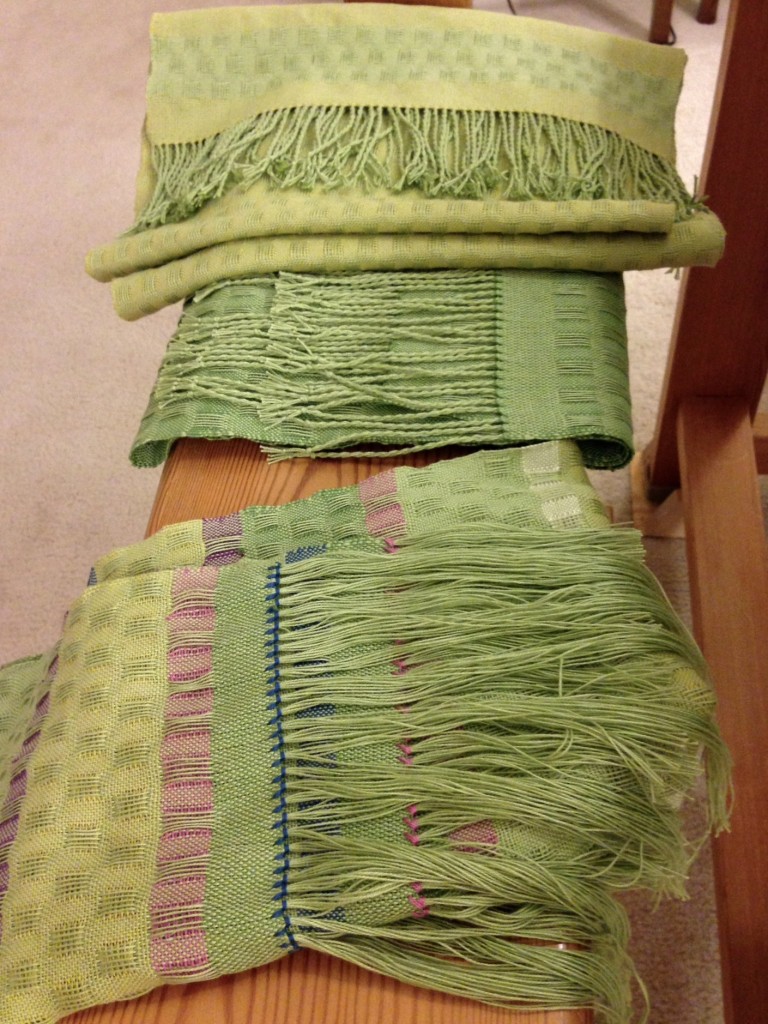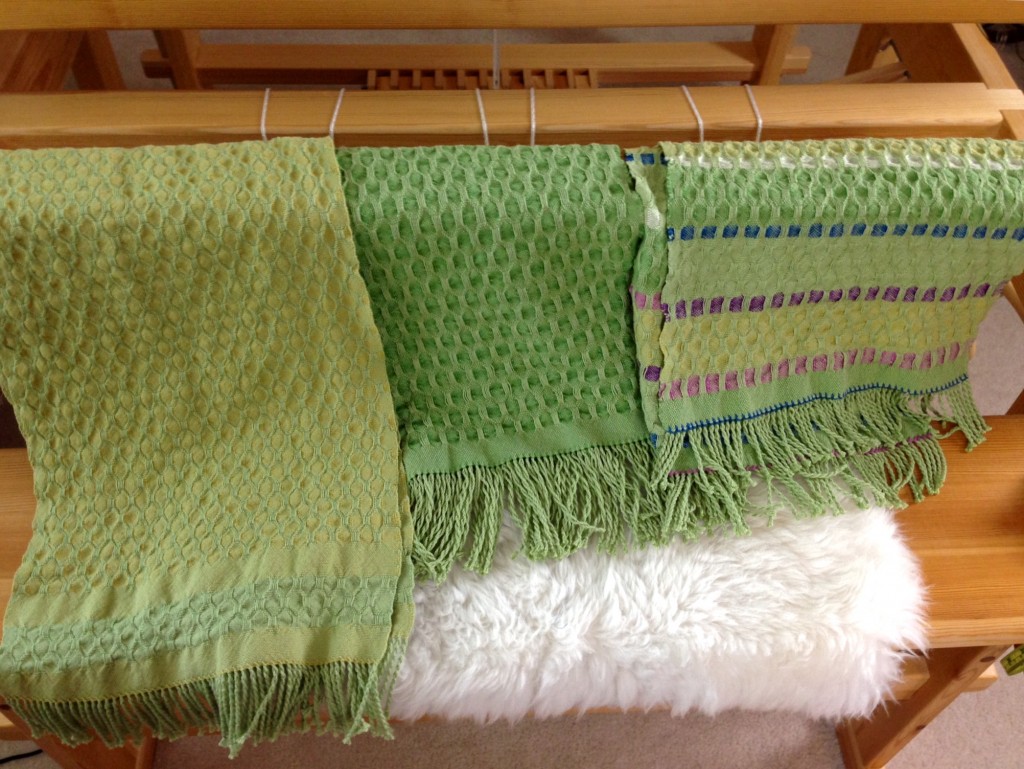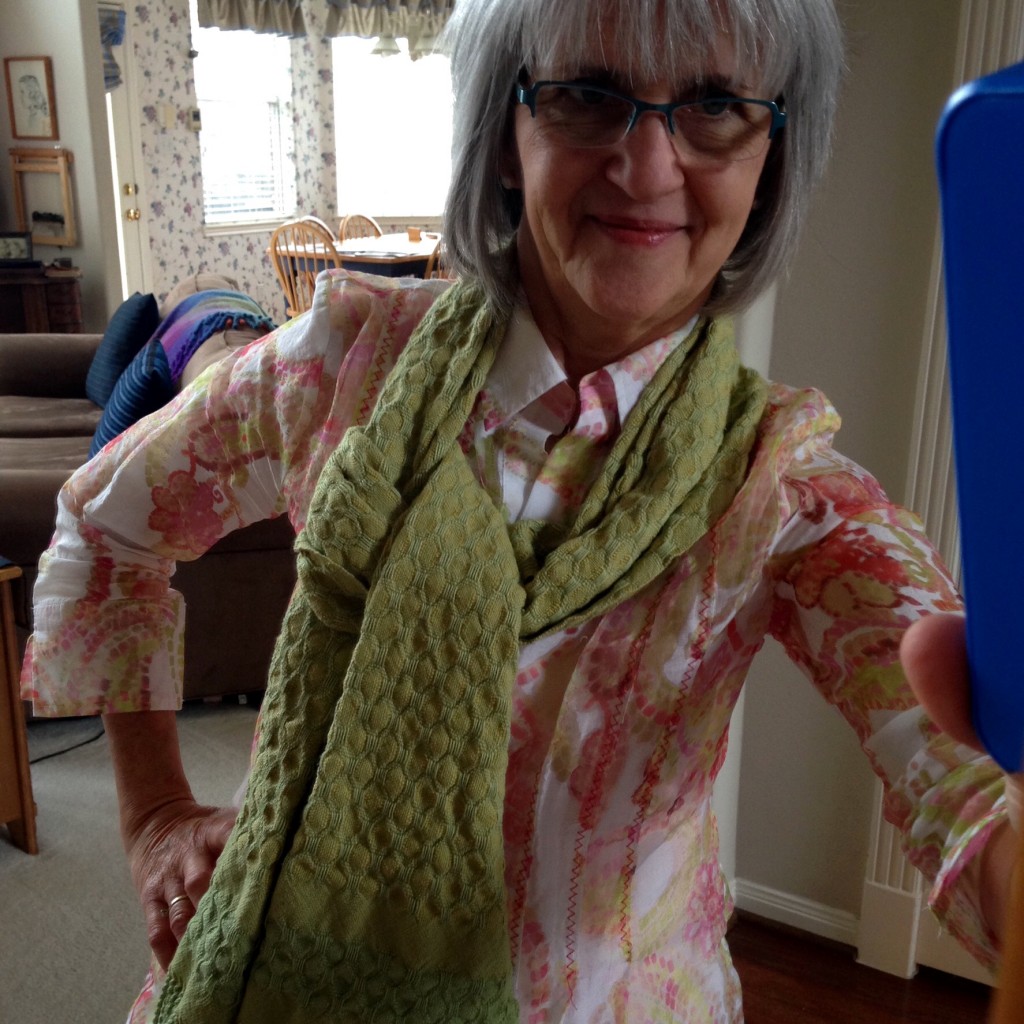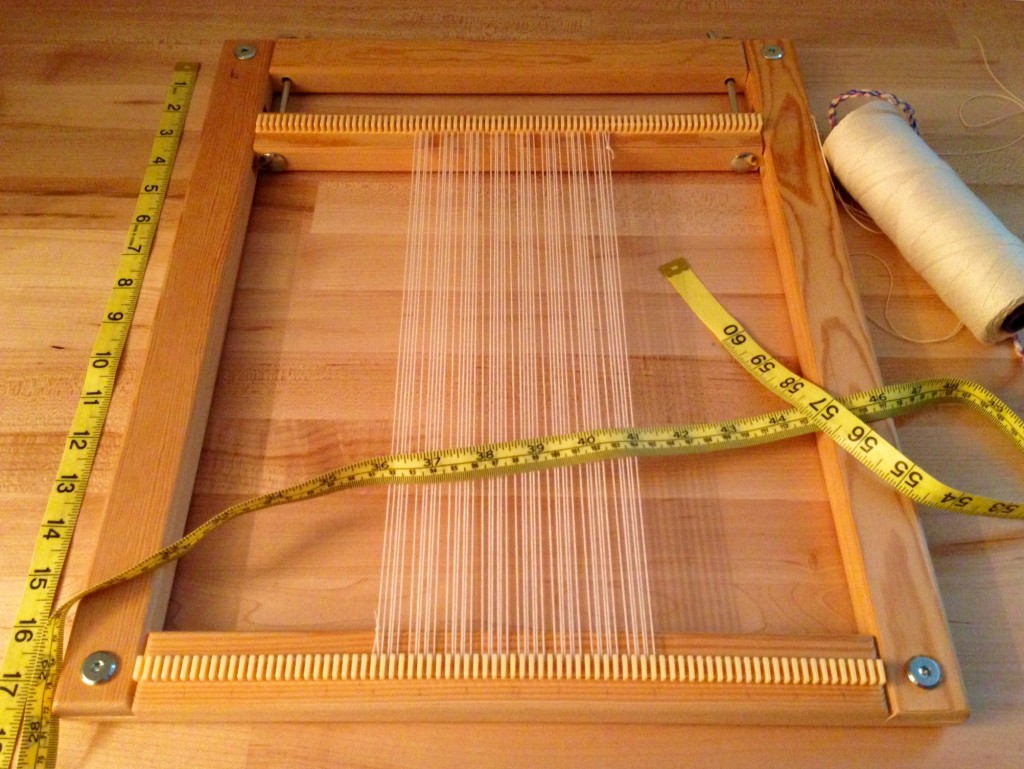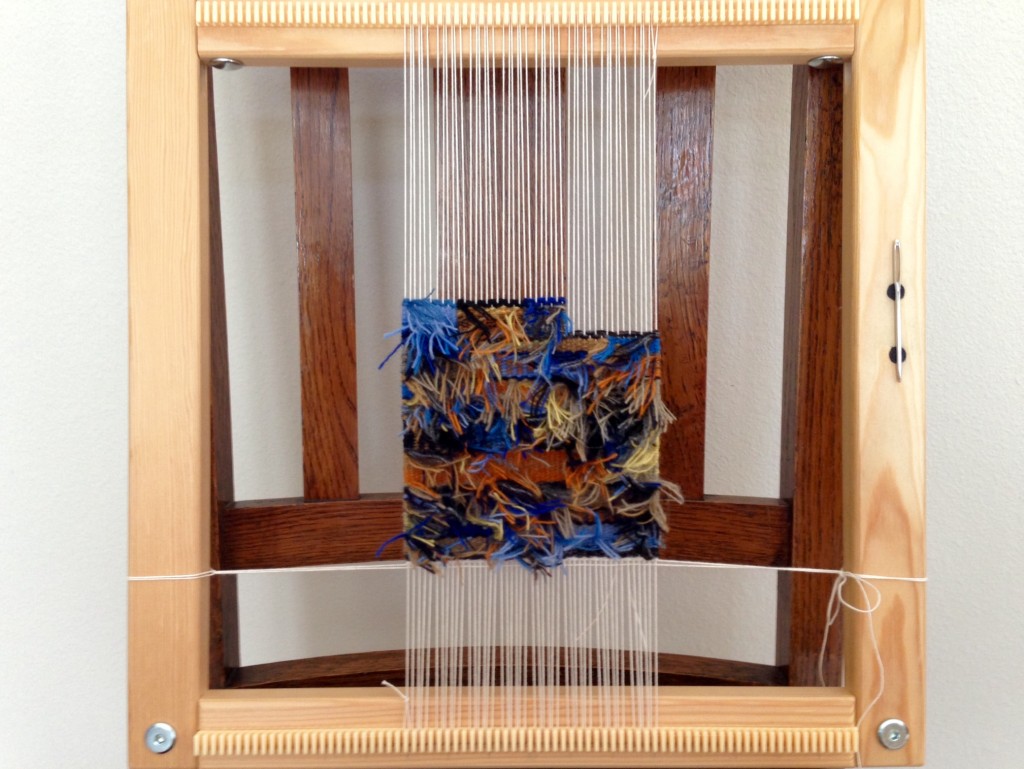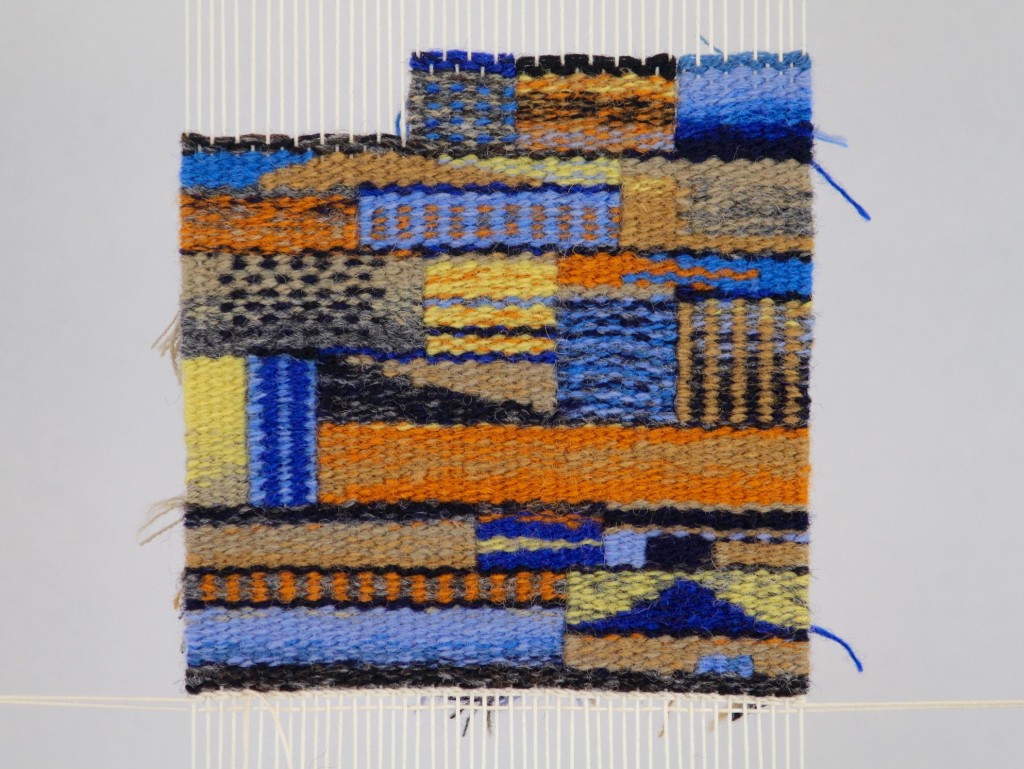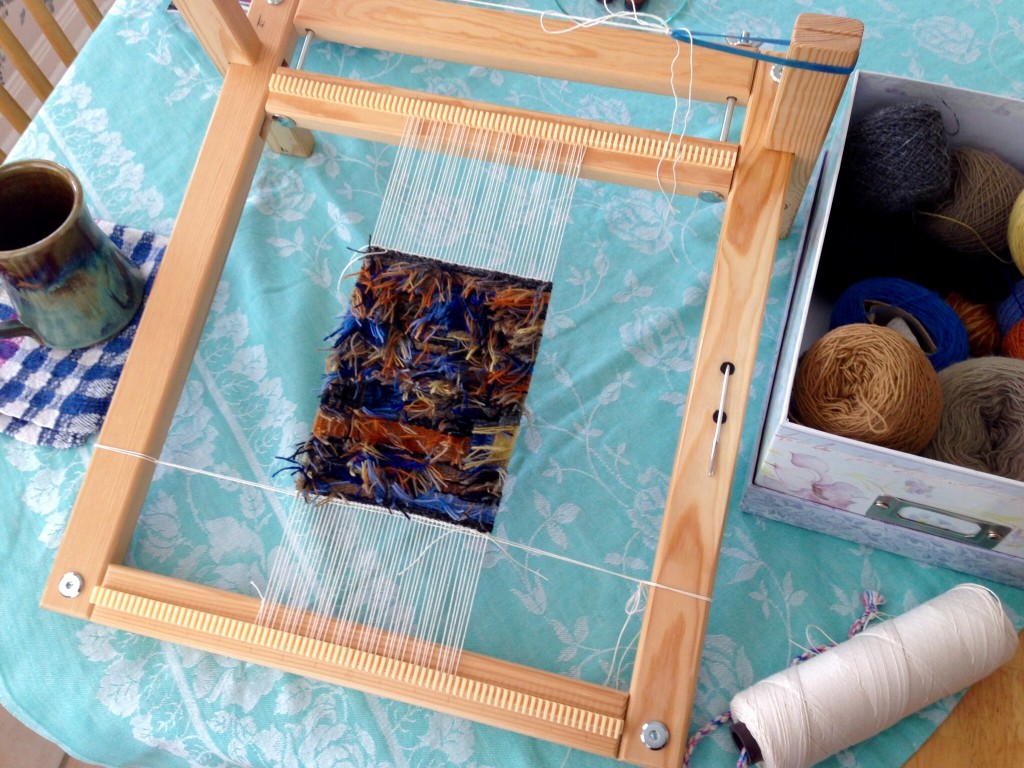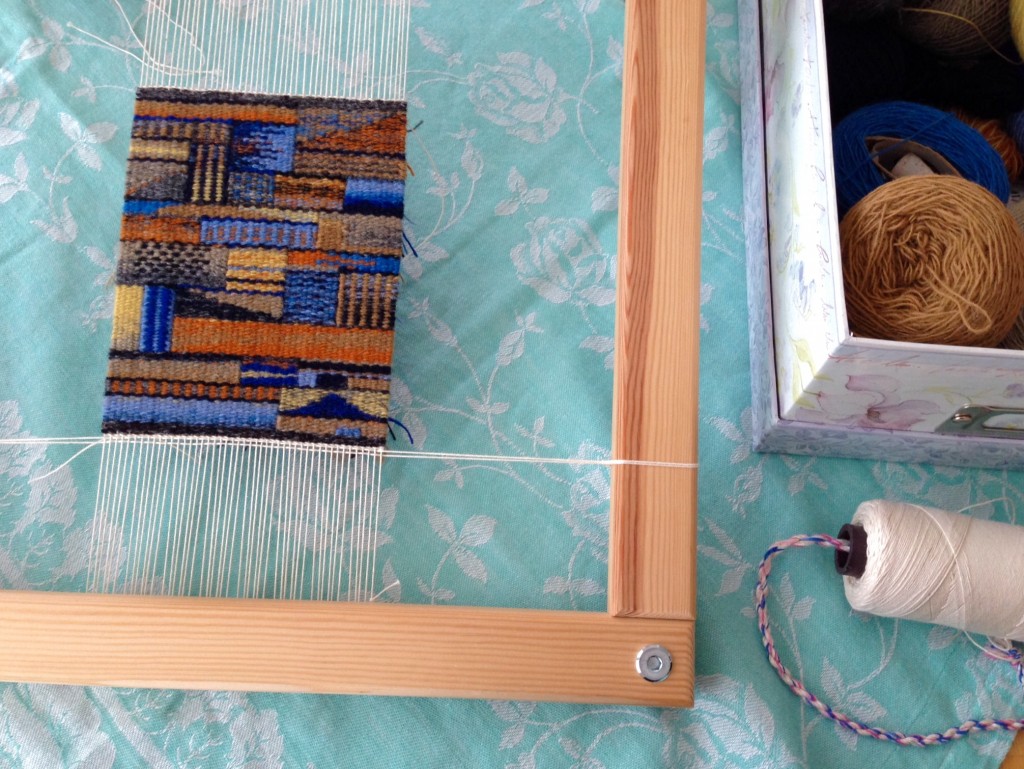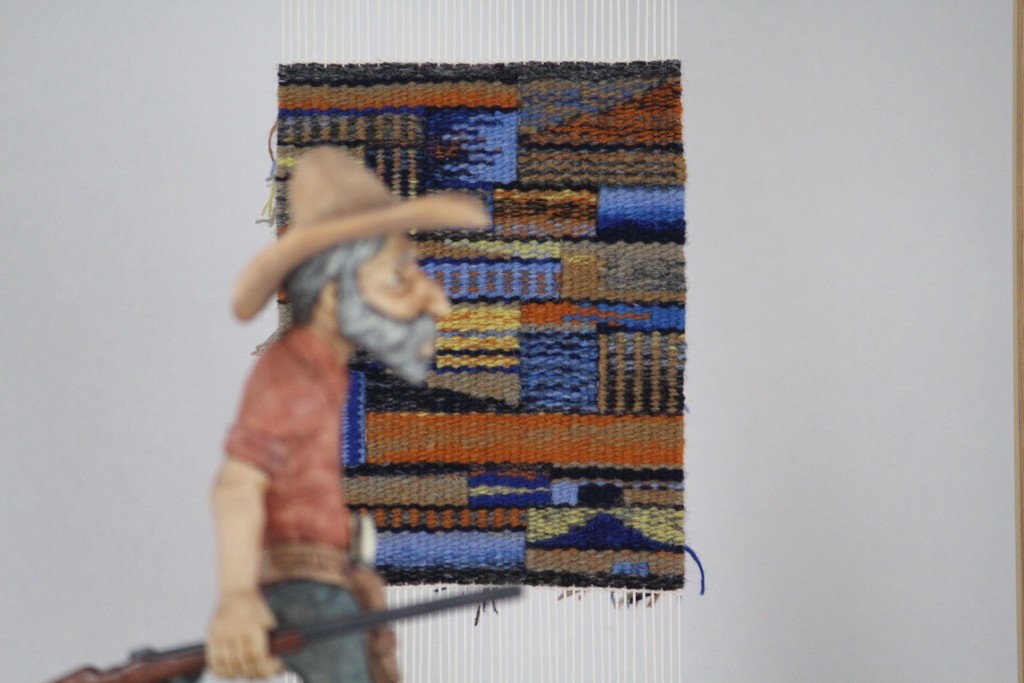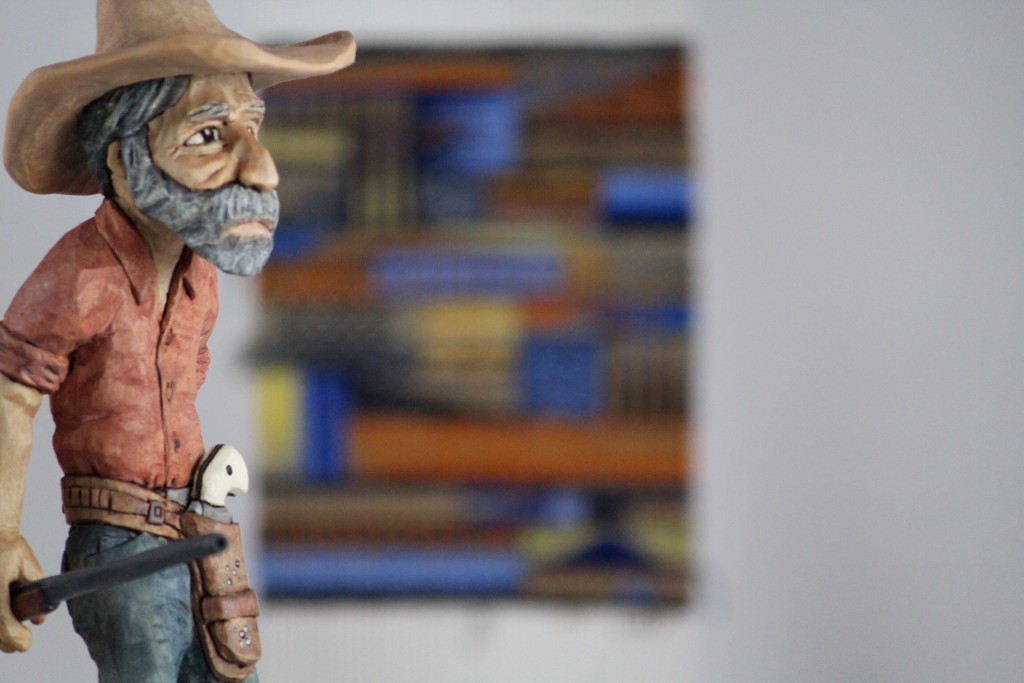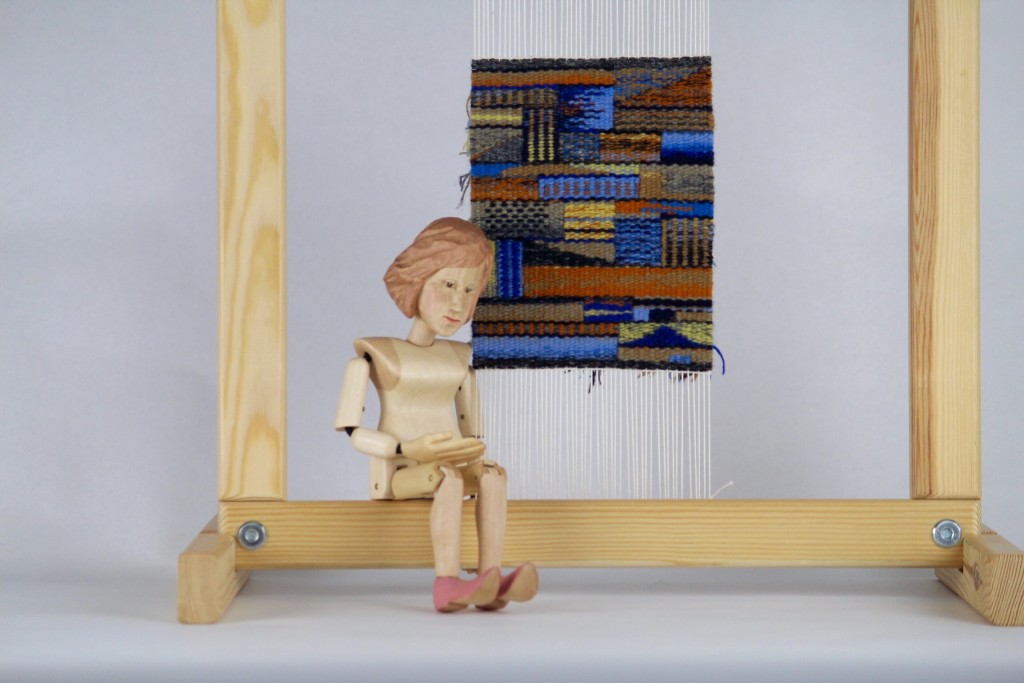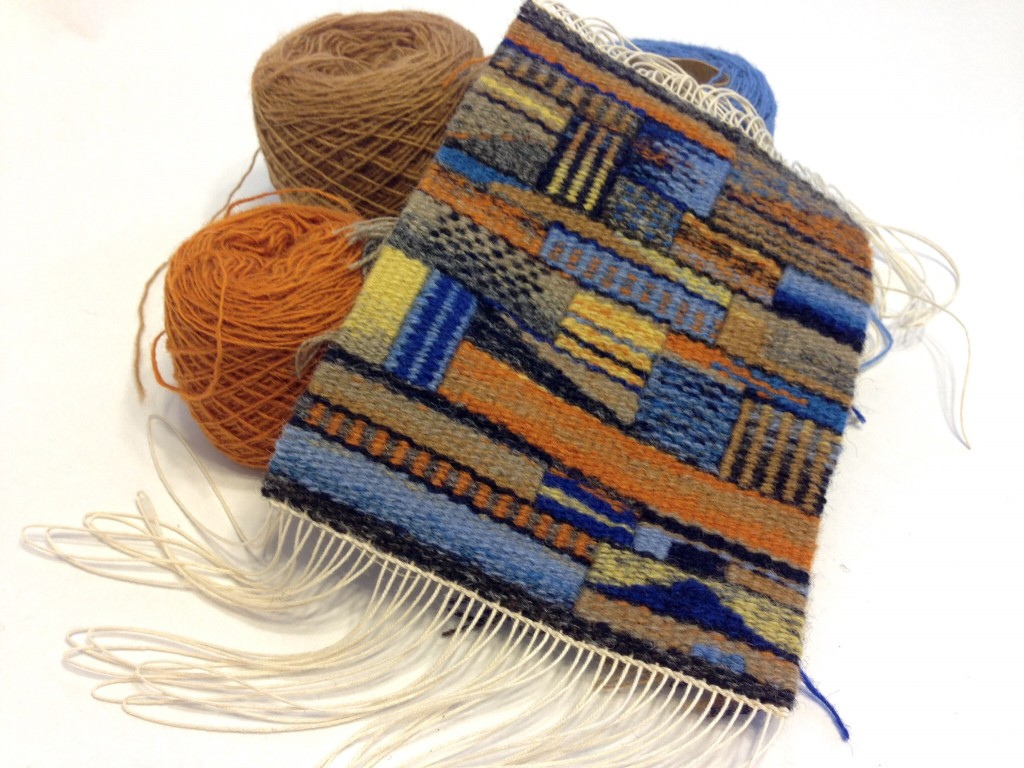Today I am in my little playhouse in the Glimåkra Standard, threading heddles for halvdräll. This draft requires my strict attention. No multitasking. I have one thing in mind: thread the heddles. Threading errors are rare for me. And I’d like to keep it that way.
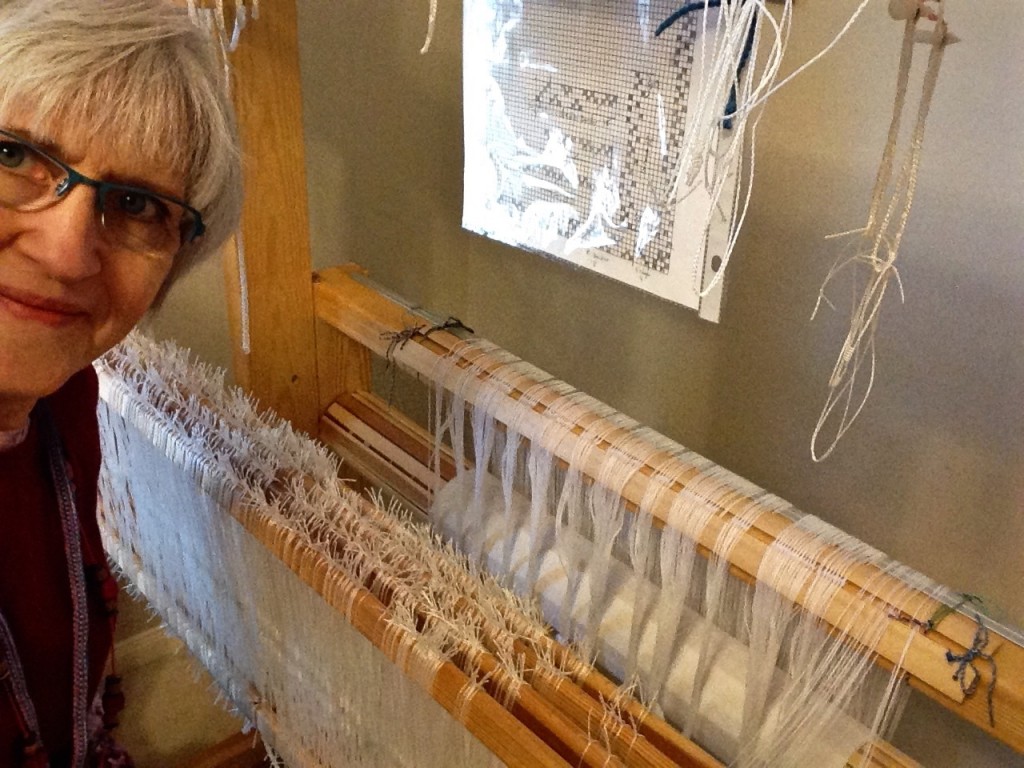
There are several things I do to prevent threading errors, or at least to catch them early while they are easy to correct.
Tutorial for Preventing Threading Errors – (Watch the accompanying video below)
- Count the warp ends at the lease sticks into logical groupings, and bundle the grouped ends together with a loose overhand knot. (In this case, the groups are: 4 selvedge, 18 right side, 27 block I, 57 block II, repeat the 2 blocks 5 times, 18 left side, 4 selvedge.) I ended up with 2 extra ends at the left selvedge, so I worked my way back, re-counting each grouping until I found the spot where I had mis-counted, almost all the way back to the right selvedge ends. If that happens, re-count and re-tie each grouping until it all adds up correctly.
- Tape or hang your threading draft where it can be easily seen.
- Take one bundle of ends at a time, starting on the right-hand side, and thread those ends into their heddles, following the threading draft. It helps me to say the threading order out loud as I do the threading.
- Check your work. Hold the just-threaded ends taut with your left hand, and with your right hand check every end, one by one, to see that it is going through the correct heddle. Make threading corrections, if needed, by pulling out errant ends and re-threading them. Tie that completed grouping with a loose slip knot. Again, I say the threading order out loud as I check the threading.
- Repeat steps 4 and 5 until threading is complete.
- Know when to take a break. Five minutes away from the loom every now and then serves to refresh my ability to concentrate. If I do a nonstop marathon, I’m prone to make errors.
Now, what about a tutorial for living? Grace means that we have been given a free tutorial for purposeful living. Jesus brought the grace of God to us. Christmas reminds us of that. It’s the grace of God that instructs us for living. It’s as if we have an ancient weaving draft; and we’ve been given the grace, the tutorial, that shows how to understand the draft to make meaning in the fabric of our lives.
May you catch all your threading errors while they are easy to fix.
Threading Heddles from Warped for Good on Vimeo.
Be sure to drop by on Friday. I can’t wait to show you what I’ve done with the warp-printed fabric from Warp Stamping Is Over!
On purpose,
Karen

